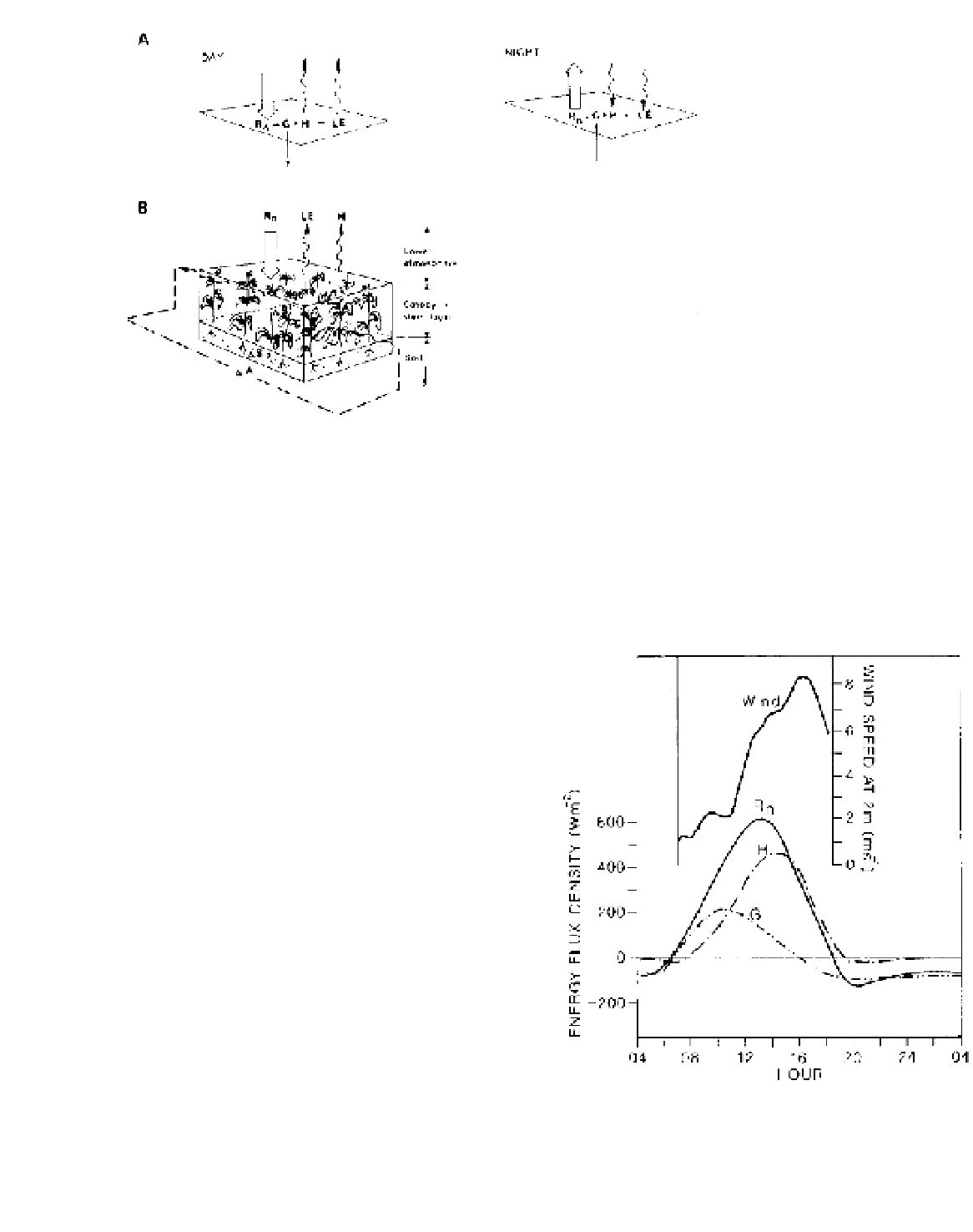Geoscience Reference
In-Depth Information
Figure 12.2
Energy flows involved in
the energy balance of a simple surface
during day and night (A) and a vege-
tated surface (B).
Source
: After Oke (1978).
Occasionally, condensation may contribute heat to the
surface.
Commonly, there is a small residual heat storage
twenty-four-hour period, about 90 per cent of the
net radiation goes into sensible heat, 10 per cent into
ground flux. Extreme surface temperatures exceeding
88°C (190°F) have been measured in Death Valley,
California, and it seems that an upper limit is about 93°C
(200°F).
(
S) in the soil in spring/summer and a return of heat
to the surface in autumn/winter. Where a vegetation
canopy is present there may be a small additional
biochemical heat storage, due to photosynthesis, as
well as physical heat storage by leaves and stems. An
additional energy component to be considered in areas
of mixed canopy cover (forest/grassland, desert/oasis),
and in water bodies, is the horizontal transfer (
advec-
tion
) of heat by wind and currents (∆A; see Figure
12.2B). The atmosphere transports both sensible and
latent heat.
∆
B NON-VEGETATED NATURAL
SURFACES
1 Rock and sand
The energy exchanges of dry desert surfaces are rela-
tively simple. A representative diurnal pattern of energy
exchange over desert surfaces is shown in Figure 12.3.
The 2-m air temperature varies between 17 and 29°C,
although the surface of the dry lake-bed reaches
57°C at midday.
R
n
reaches a maximum at about 13:00
hours when most of the heat is transferred to the air by
turbulent convection; in the early morning the heating
goes into the ground. At night, this soil heat is returned
to the surface, offsetting radiative cooling. Over a
Figure 12.3
Energy flows involved at a dry-lake surface at El
Mirage, California (35°N), on 10 to 11 June 1950. Wind speed
due to surface turbulence was measured at a height of 2 m.
Source
: After Vehrencamp (1953) and Oke (1978).

